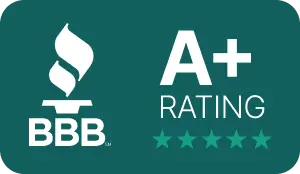Why investors eye probate funding
When you already think in terms of ROI, an inheritance locked in probate feels like idle equity. Courts can take a year or more to authorize distribution—long enough for a promising market cycle to pass, a rental deal to close without you, or an interest-rate window to slam shut. By converting a future distribution into immediate cash through a probate advance, investment-minded heirs can capture opportunities that compound long before the estate settles.
Liquidity without liquidation
A common misconception is that the only way to raise capital quickly is to dispose of estate assets. Yet selling a family duplex or a parcel of raw land may sacrifice long-term appreciation. Funding offers a middle path, allowing heirs to tap value now while still keeping property in the family portfolio. This approach resonates with investors who prefer to preserve real estate rather than offload it under pressure, maintaining rental income and potential tax advantages.
The math of opportunity cost
Consider an heir who expects $200,000 but faces a 14-month probate timeline. Even a modest 8% annual return on that money would generate roughly $18,700 in gains if invested today. Weigh that figure against the funding fee, and the cost of waiting often outweighs the cost of accessing cash. Investors call this “time value,” but probate courts do not, which is why funding can turn passive wealth into active capital.
Fueling strategic litigation when necessary
Not every estate glides through court uncontested; sometimes the road to distribution winds through deposition rooms and mediation tables. Investment-oriented heirs understand that defending their equity may require capital. A funding facility can finance litigation in estate disputes—attorney retainers, expert valuations, forensic accounting—without forcing the claimant to liquidate personal holdings or derail other ventures.
Risk-adjusted returns on defense spending
Because a funding company’s repayment comes solely from the heir’s eventual share, it underwrites the claim’s strength before advancing cash. This underwriting resembles a private-equity partner vetting a deal: if the numbers and legal merits check out, the capital flows. The heir effectively shares risk with the funder, aligning incentives and providing a measured budget for the legal fight.
Advance versus sale: sizing the payout
Some heirs wonder if it’s smarter to offload estate assets outright and pocket the proceeds. The decision hinges on growth potential, tax exposure, and personal risk tolerance. In many scenarios, weighing early cash against asset disposition shows that keeping appreciating property while accessing a percentage of its value delivers the best of both worlds: liquidity today and upside tomorrow.
Tax-efficient deployment
Proceeds from a funding transaction are generally not taxable income because they’re an advance on a vested inheritance interest. Investors often channel the cash into assets that qualify for favorable capital-gains treatment or depreciation schedules, compounding the benefit of early access. Coordinating with a CPA ensures the advance dovetails with 1031 exchanges, qualified opportunity zones, or Roth-conversion strategies.
Cross-border heirs and currency arbitrage
Global investors know that forex swings can make or break a deal. When a beneficiary resides outside the United States, waiting for the court may expose them to adverse exchange-rate movements. Fast access to dollars lets them convert funds when rates are favorable, applying lessons learned by cross-border beneficiaries who manage currency risk by timing conversions strategically rather than on the court’s schedule.
Deploying capital in multiple markets
Early liquidity also permits global heirs to diversify immediately—perhaps acquiring U.S. real estate before moving part of the portfolio into emerging-market ETFs or a venture capital fund in their home region. The ability to move quickly across jurisdictions transforms a static inheritance into a flexible war chest.
Medicaid considerations for family planners
Sophisticated investors sometimes manage wealth for aging parents who receive Medicaid benefits. A sudden distribution can disrupt eligibility, prompting costly spend-downs. Strategically timed funding can supply enough cash for investments while respecting benefit thresholds, echoing strategies used when navigating Medicaid asset limits. The key is coordinating disbursement dates and spend-down plans with an elder-law advisor.
Balancing growth and care costs
By mapping investment timelines to anticipated medical expenses, heirs can allocate advance proceeds into income-producing assets while reserving exempt resources—such as home modifications or medical equipment—that satisfy Medicaid rules. This dual approach grows the estate’s long-term value without jeopardizing current coverage.
The mechanics: how funding works
A probate-funding company reviews the estate inventory, verifies debts, and calculates the heir’s share. Once approved, funds often wire within days, allowing investors to seize time-sensitive opportunities. Because the transaction is non-recourse—no personal guarantee and no credit pull—leveraged investors avoid adding traditional debt to their balance sheet. When probate closes, the estate repays the funder directly, and any remaining distribution flows to the beneficiary.
Mitigating risk through diversification
Investors who use an inheritance advance frequently deploy the proceeds into multiple asset classes—real-estate syndications, municipal bonds, even angel investments—creating diversified streams rather than tying fortune to a single property sale at an uncertain future date. Diversification softens the impact if probate drags longer than predicted, as new assets begin generating returns independently of court timelines.
Choosing a funding partner
Vet providers by examining fee transparency, state licensing, and turnaround times. Ask whether they cap returns or compound fees over time; a clear payoff schedule guards against surprises. Providers that work closely with estate attorneys often expedite document retrieval, shortening the window between application and funding—a crucial edge when markets move fast.
Negotiating terms like an investor
Seasoned heirs treat the advance like any other capital raise. Negotiating lower fees for larger advances or offering additional estate documentation for quicker underwriting can tilt terms in their favor. Remember, funding companies compete on speed and service; an organized heir with a well-documented estate profile holds leverage.
Turning capital into opportunity
Whether the goal is acquiring a distressed multifamily building, buying into a franchise, or simply rebalancing a portfolio after a turbulent year, probate funding lets investment heirs act decisively. By extracting value today, they harness compounding returns that far outpace the cost of access.
Ultimately, probate funding is not just about filling a cash gap; it is about aligning time, capital, and strategy. When executed thoughtfully, an advance becomes the catalyst that transforms an inheritance from a static windfall into a dynamic engine of growth—proof that wealth can move as quickly as the mind that stewards it.








